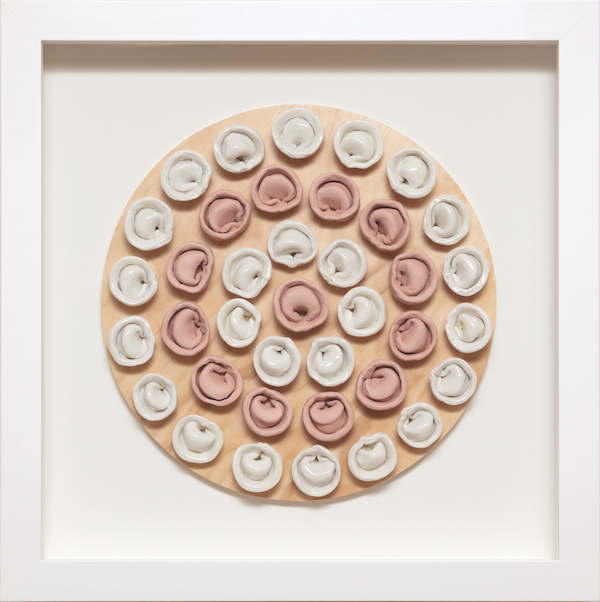The symbolic significance of pasta cannot be understated, both on a universal level with its associations with comfort and pleasure, as well its indisputable importance to Italian cultural traditions. Its location within these social and psychical constructs made it the perfect subject for Sydney-based artist Alannah Grasso. Grasso, of Italian heritage herself, has fond memories of making pasta with her Nonna and extended family, and today her works explore ritual, familial linkages and overlooked histories. Pasta making acts as a cross-generational social glue, preserving traditional techniques beyond the borders of Italy and enforcing important bonds within diasporic groups. Grasso’s repetitive, durational practice enables her to contemplate these roots at length, a process which is both joyful and cathartic. Nevertheless, despite the historicity of pasta as a motif, Grasso’s work is distinctly contemporary in style.
Embracing current culinary trends which have seen coloured pasta grace the tables of many a stylish restaurant, the artist does not limit herself to a traditional palette. Additionally, the more than 300 types of pasta grants the artist a wide selection of shapes to creatively employ in novel and often surprising ways. Tradition and innovation come together in the practice of Grasso, who seeks to inspire conversations about cultural narratives and identity, and, of course, hopes to leave her viewers hungry.
Featured image:Alannah Grasso, Tortellini, 2020. Ceramics and wood, 45 x 45cm.Courtesy: the artist.

